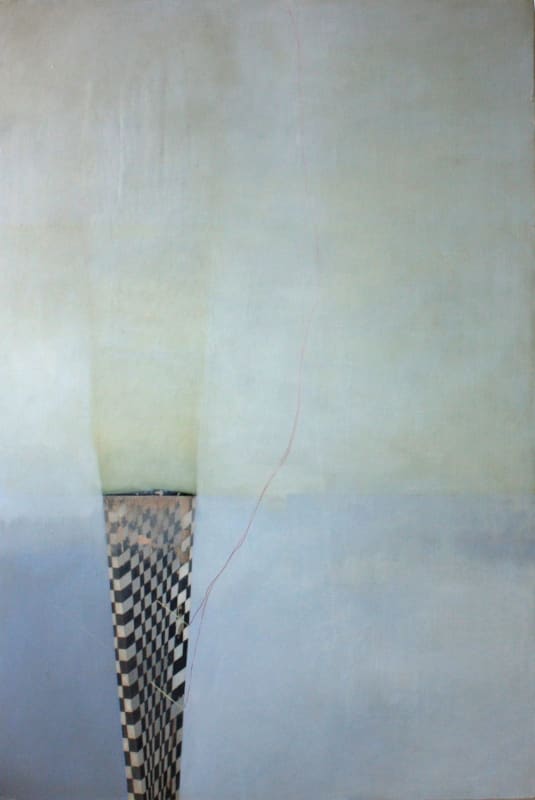The Molesworth Gallery is delighted to present Hiraeth, a solo exhibition of new work by Gillian Lawler. 'Hiraeth' is a welsh word that describes the pain of loving a place, the pain wrought by distance, a yearning for a home you cannot return to, a home that no longer exists - or perhaps never was. The work draws on memories of Lawler’s childhood home, which was surrounded by old trees, tall and imposing but simultaneously safe and protective. Well-trodden footpaths led the way to fields beyond, dotted with cherry and beech coppices, where the artist regularly lost herself in an immersive fantasy world. She left this home many years ago, but its early impressions are deeply rooted in her art-making. Her interest in abandoned places echoes the loss and longing to reconnect with her formative years growing up in this rural landscape.
Her previous eminent domain exhibitions, based on the abandoned mining town of Centralia in Pennsylvania, referenced the reality of a desolate landscape and the forced relocation of its inhabitants to a nearby borough. Suspended, grounded and hovering structures invoke these ghostly inhabitants, confronting the viewer with a wasteland, suggesting a vast and fragile future or past. These hypothetical architectural structures act as sentinels, observing at a distance, travelling perhaps to another place, appearing conspicuous at times or camouflaged by elaborate patterning.
Lawler’s new work infuses the idea of relocation and transformation through different states of being. The work incorporates the platform as an entity which is at times grounded, moving, suspended, tethered, hovering and at other times standing apart from the surrounding landscape. These platforms act as after-images, recalling the ritual of the Tibetan sky burial, where the placement of the body on a platform high in the Himalayas, cleaved of life, represents the movement of the body/spirit from one state to another.
The former head of collections at IMMA, Catherine Marshall, has written of Lawler’s work that it is pervaded by unease. “It hangs like microscopic atoms of pollution in the air, lingers around multiple ‘blind’ windows, seeks to find a foothold under the high rises, only to collapse into the hollow grid-like like spaces that should be their foundations, and attempts to settle on ground that is subtly curved, billowing or cratered.” The work is marked by “strange blooms of faded colour, dusty pinks, yellows and greens that glow uncertainly against almost monochrome ground colours, surprised occasionally by more accentuated patchworks that remind one simultaneously of Colin Middleton and of illustrated children’s books”.
Yet Marshall also maintains that Lawler’s incredibly subtle treatment of colour, texture and scale “make her work a celebration of everything that is good in painting. The work is uplifting because it is always uplifting to find artists with the courage to address difficult issues. When they do it so subtly and effortlessly, we all benefit. The last words in relation to Lawler’s painting are a repetition of those attributed to the great German Modernist Mies Van Der Rohe on good architecture: ‘less is more’”.
Lawler was born in Kildare in 1977. She received a BA in Fine Art from the National College of Art and Design, Dublin, in 2000. She has won numerous awards, including the Hennessy Craig Award, RHA Gallery Annual exhibition in 2007, the Whytes Award, RHA Gallagher Gallery in 2007 and was the overall winner of the Open Selection Exhibition Award at the Éigse Arts Festival in 2009. Other awards include a Kildare Arts Services Award 2015/2013/2011/2009, an Arts Council Bursary Award 2009, and Culture Ireland Award 2011. She was shortlisted for the Beers Lambert Contemporary, Thames and Hudson publication, 100 Painters of Tomorrow in 2013, the Celeste International Art Prize in 2012 and a Merit prize from the Golden Fleece Award in 2013.
